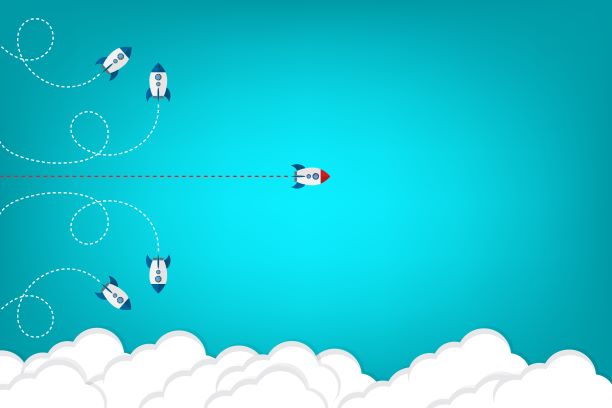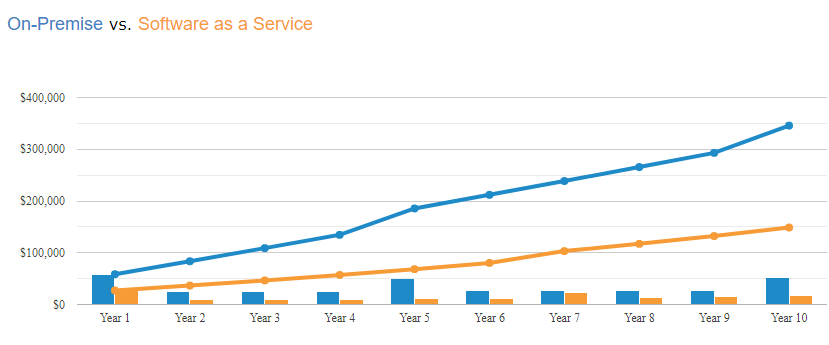Time to move to the cloud — how to spot fake SaaS from true SaaS!

Let’s cut to the chase, fake SaaS is rife in the industry, I am sure you have seen in the industry several incumbent software companies now offering ‘cloud’ or ‘365’ styled products to their customers. I want to show you how this window dressing of their products are designed to lure you in and likely to come back to haunt you a couple of years down the line.
SaaS is starting to become a ubiquitous term in the industry as the preferred modern model for the distribution and licencing of software. The key and arguably essential feature of SaaS is that it is accessed by users using a thin client such as a web browser from the hosted infrastructure of the vendor.
This allows customers to realise the benefits of the model such as near-instant user scaling, reduced capital costs on infrastructure and client workstations, guaranteed uptime and fully managed systems, frequent (and automatic) updates and releases, as well as faster turnaround on general support.
So where does fake SaaS come in?
Fundamentally it is impossible for vendors whose investments are in producing and maintaining legacy on-premise software solutions to offer the benefits of a true SaaS model. The business-models and infrastructures have incongruous revenue models. On one hand the legacy software vendor expects the customer to make all the capital outlay for infrastructure and local staff to support the system whereas for SaaS the vendor assumes all responsibility for the end to end supply, operation and support of their entire solution.
A vendor used to deferring these costs onto their customers and maximising sales revenue from perpetual licences would need to make a 180degree turn to be able to allocate the resources necessary to implement the infrastructure needed and drive the innovation to bring a product to market. SaaS cloud companies success depends entirely on their customers experience of their software service, non-SaaS companies success depends entirely on ever increasing sales of licences and support fees.
We are increasingly observing in the industry vendors repackaging their existing offerings to appear analogous to the SaaS offerings of other companies, whilst at the core remaining their same legacy technologies and distribution models. Literally they are applying window dressing onto their products and marketing in such a way that benefits themselves whilst not offering any significant advantages to their customers. Often their listed advantages are no different than that of legacy on-premise software and they fail to mention the true SaaS advantages such as migration speed, performance, upgrades, value, support, uptime and maintenance.
This strikes not as a commitment to their customers and innovation in their software, but a means to keep their customers from using the more progressive and innovative tools and technologies available on the market today.
How do I spot these vendors?
Fortunately armed with a few simple questions, you can ask your existing or potential supplier about their offerings. No true SaaS company would have any issue in getting you a quick and simple response:
1) Can I purchase directly with little / no salesperson interaction? Take it as a big red flag if you can’t sign-up on their website without talking to a salesperson or on-boarding consultant. Some companies are expert are avoiding the transparency needed for a customer to make a decision, on both technical and financial aspects of their software and like to hide the TCO (total cost of ownership). True SaaS models are generally low risk with customers able to dip-their-toe and see what works for them and your access time should be within a few hours at most.
2) How long will it take before I can use the software if I paid you today? If you are told it will take a few weeks to set-up, take this as a warning. Genuine SaaS infrastructure is setup that new customers can be added efficiently as possible — your expectation should be within a few hours.
3) Are fixes and updates included in my SaaS fees? It is expected that while you continue to pay your fees that the service you paid for is maintained and accessible indefinitely.
4) Do I need a local server to host the software? If you require a local server as part of the software installation it is certainly not SaaS. Generally these indicate a legacy component such as central processing or licence administration, commonplace in software written in the 1990s. Capital outlay to implement SaaS software should be virtually nil, especially if your workforce already has contemporary workstations and laptops.
5) How often do you release updates? SaaS software is usually administered as continual integration — improvements and fixes being made to the customers on a regular basis. Generally in this model even major updates to functionality are included in the fees and implemented without disruption to the customer’s business. Legacy software generally has much longer release cycles, often as long as 18 months. It is not uncommon for us to hear that customers are still using old versions of software because of the costs and uncertainty in upgrading.
6) Do I need to install updates and patches myself? As part of a SaaS offering you should not need to administer any aspect of the infrastructure or operating software. This goes the same for backups and restoration. You should be hearing alarm bells if the vendor requires you to ‘peek behind the curtain’ at any time. If your vendor needs access to your internal systems as part of the offering it is a red flag.
7) Do I need to reconfigure customisations and integrations after an update? For larger organisations there is often the need to integrate software into existing processes. True SaaS vendors will ensure that updates to their stack will not break existing functionality. Always check if the vendor has an API that they guarantee to work and if they will charge an additional fee to fix integrations that become broken as a result of the upgrade.
8) Can you give me a full breakdown of my fixed, reoccurring and expected costs over the next 3 years? True SaaS vendors can clearly articulate these costs and you can predict them over the lifetime of your project or use of the tool. Make sure you consider the TCO (total cost of ownership) by using one of the many available calculators (such as https://www.softwareadvice.com/tco/) to really see the impact in a few years on your operating expenses. A lot of organisations fail to take into account that the sunk capital expenditure on on-premise servers will require future upgrades and have on-going staff costs.

Conclusion
When considering your next software update or a new solution, we always recommend the SaaS delivery model. Just be sure that your vendor is providing you a true SaaS solution and not a re-packaged legacy product. The focus for the vendor should be in investing in the tools and technology that will serve your needs for decades to come.
Always remember that the business landscape is rapidly converging on a cloud-connected collaborative model. A fake SaaS stopgap may be good for your vendor, but in the meantime your business is being kept behind to subsidise their legacy operations and lack of innovation. This missed opportunity was the chance for your company to use a system that would be productive and relevant for decades to come whilst reaping the benefits of enhanced connectivity and collaboration, to your vendors and customers as well as an elimination of server capital and maintenance costs.
Our Cloud solutions are built to give your team access to Arcadia from any location with web access. Our infrastructure is built to target 100 percent guaranteed uptime with fast performance and data privacy protections.

Cadonix business success is built on this promise, as a company we cannot fail our customers and continue to operate, our success is geared to providing you with the best possible experience with the use of our software. We are here to keep the industry productive. If you are interested in our Cloud SaaS Electrical and Harness design software head over to www.cadonix.com or email info@cadonix.com for more information.
Andrew Armstrong https://www.linkedin.com/in/drandrewarmstrong/